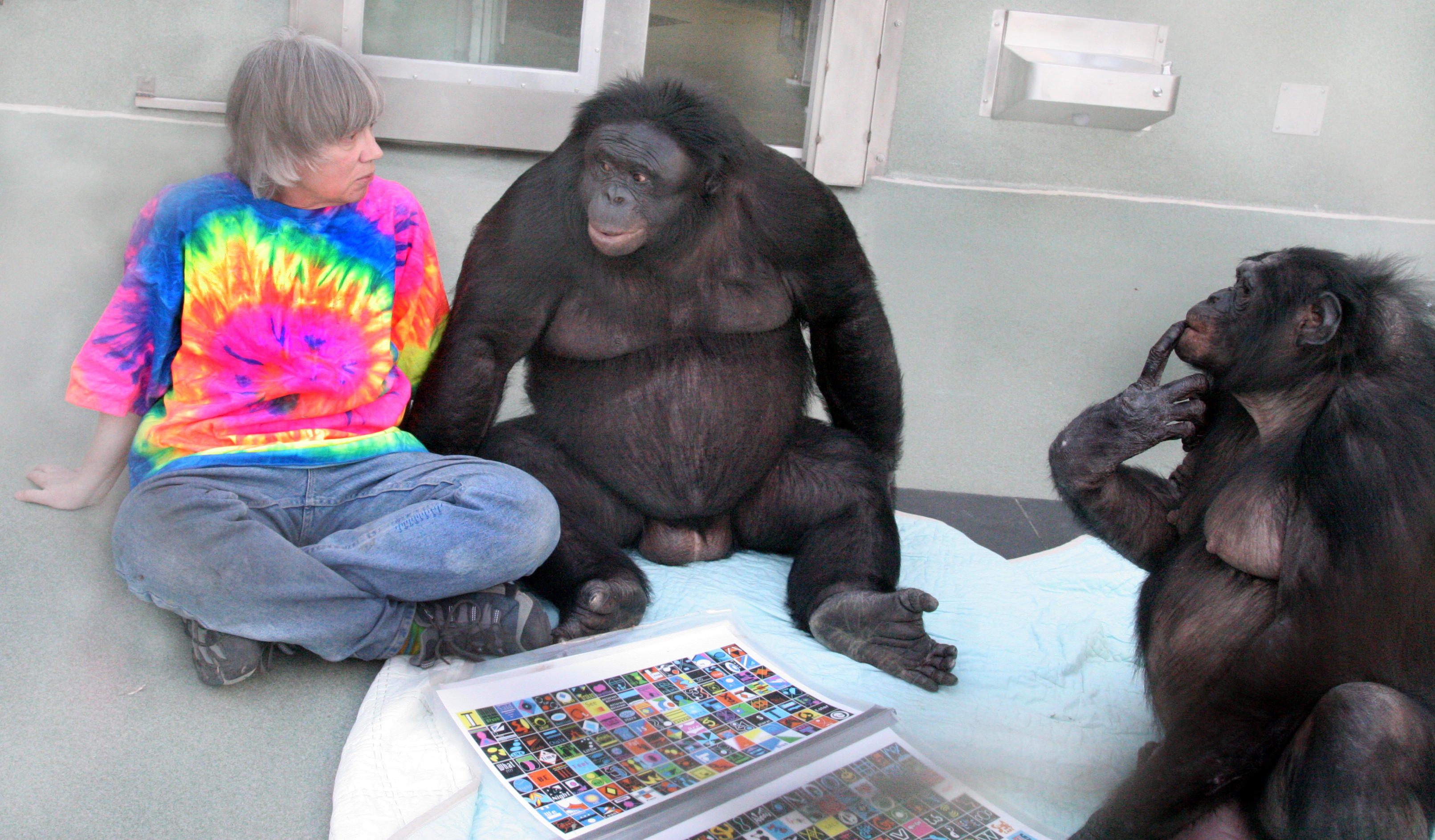Who
could imagine that there are gentle apes living in the very heart of darkness,
north-central Congo-Kinshasa, somewhere around Colonel Kurtz' proverbial
hunting grounds? :-)
"Bonobo. The Forgotten Ape" is a popularized book about the least known great ape. The bonobo wasn't officially discovered by science until 1929. There had been bonobos in captivity before that time, but scientists assumed they were chimpanzees, albeit very gentle and very smart ones! For a long time, the bonobo was mostly studied by German scientists who published their findings in obscure journals such as "Säugetierkundliche Mitteilungen". The Anglo-Saxon scientific community didn't pay much attention until the 1970's and 1980's, and even then, much of the research was carried out by Japanese scientists, rather than Westerners. To the general public, bonobos are probably still quite unknown. I heard of bonobos already as a kid, but I assumed they were simply a smaller subspecies of chimp. Back then, bonobos were known as "Pygmy Chimpanzees". Curiously, the myth of the killer ape never reached my neighbourhood, so I grew up assuming that chimps were peaceful. They are not. Bonobos, however, are. Which finally brings us to the reason why these apes are so interesting!
Bonobos and chimpanzees are closely related, and both of them are equally close to humans. Yet, the two species are very different. To simplify somewhat, chimpanzees are patriarchal, aggressive, heterosexual and carnivorous. Bonobos, by contrast, are matriarchal, peaceful, bisexual and near-vegan! Politically correct apes? Who ever heard of such a thing? Since both chimps and bonobos are equally closely related to humans, this makes it harder to claim that humans are necessarily patriarchal or aggressive "by nature". Indeed, some scientists believe that "the missing link" may have more closely resembled a bonobo than a chimp. While none of this proves much in and of itself, it's nevertheless intriguing. Of course, the trait bonobos are mostly known for, is that they have sex for non-reproductive reasons, including "gay" and "lesbian" sex. Unfortunately, they also practice paedophilia.
"Bonobo. The Forgotten Ape" contains seven chapters summarizing the bonobo basics. It contains interviews with scientists studying the bonobos, both those living in the jungles of the Congo, and those preferring the relative safety of American zoos. The text is easy to read, but could perhaps have been better written or edited. (Yes, I'm a perfectionist, and Frans de Waal's books, although interesting, tend to fall short of my splendidly high standards.)
The best part of the book are Frans Lanting's full-color photos. Since the book is almost coffee table format, this makes it a worthwhile buy for every nature-lover, photo-lover or ape-lover, including those too busy to read the text! The most exciting photos are those showing the bonobos in almost erect position, standing on two legs. In bipedal position, the bonobos look almost human, especially the females.
You get the feeling that they are us, and that we are indeed the third chimpanzee. Or the second bonobo...

No comments:
Post a Comment